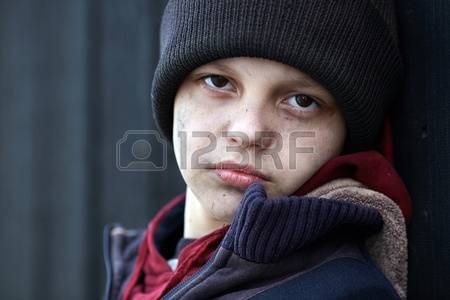10 Types of Depression You Should Look Out For! Know Your State
Depression can strike anyone, males and females, young and old, rich and poor, strong and weak. If left undiagnosed, it can severely impair not only the quality of life but can be life-threatening as well.
As it is crucial to be familiar with such a disorder, today, we are going to learn about ten types of depressions and their symptoms, diagnosis, and medication.
1. Major Depressive Disorder (MDD)
Also known as extreme depression or clinical depression, Major Depressive Disorder or MDD currently affects 16 million Americans, mostly women. It is usually treatable.

Caption: Changes in eating and sleeping habits(123rf.com)
According to American Psychiatric Association's verified diagnostic criteria, MDD patients are those that suffer from the minimum five following symptoms for two weeks or longer.
- Feelings of sadness, emptiness, worthlessness, hopelessness, and guilt
- Loss of energy and appetite
- Changes in sleep habits
- Thoughts of death and suicide
- Loss of interest in enjoyable activities
There are two subtypes of MDD: “atypical depression” and “melancholic depression.”
Mostly, young adults suffer from atypical depression. Those suffering from atypical depression are emotionally reactive, anxious and tend to sleep and eat a lot.
On the other hand, seniors tend to suffer from melancholic depression that characterizes difficulty in sleeping and rumination over guilt-ridden thoughts.
2. Treatment-resistant Disorder
Patients who suffer from the disorder do not readily respond to treatments and medications. Some patients might find that their bodies actively resists therapy and medicine.

Caption: Body Resists Therapy(123rf.com)
Dr. Noble says,
"Maybe it’s genetic; perhaps it’s environmental. Their depression is just tenacious.”
For a proper diagnosis and to identify other psychiatric and medical causes of the symptoms, a thorough workout is necessary for the patients.
Doctors prescribe patients on proper dosage and duration of treatment, and if medicine does not work, they will try switching to a similar drug, usually one from a different class or perhaps another type of medication such as an antipsychotic.
3.Subsyndromal Depression
Subsyndromal is a type of depression where a person exhibits symptoms but does not require a diagnosis.

Caption: Patients exhibits symptoms but doesn't require diagnosis(123rf.com)
Dr. Noble says,
”Maybe she has three or four symptoms, not five, or maybe she’s been depressed for a week, not two. Rather than look at symptoms, I usually look at functionality"
She adds,
"Is the patient able to go to work and take care of day-to-day responsibilities? If the person is struggling, they may still benefit from treatment, including with medication"
4. Persistent Depressive Disorder
Symptoms of a low, dark, or sad mood on most days and at least two more symptoms of depression remaining for two years or more characterize the PDD patients.

Caption: Low mood on most days plus two depression symptoms for two years(123rf.com)
If signs of irritability or depression persist for a year or more in children and teens, they may require a diagnosis of PDD (also called dysthymia).
Dr. Noble states,
“It may wax and wane in intensity, but generally it’s a low level of depression”
To be diagnosed with Persistent Depressive Disorder, people must also have two of the following:
- sleep problems
- low energy or fatigue
- low self-esteem
- poor appetite or overeating
- poor concentration or difficulty making decisions
- usually feeling hopeless
Usually, PDD treatment includes both medication and psychotherapy.
5. Premenstrual Dysphoric Disorder
Premenstrual dysphoric disorder (PMDD) affects up to 10% women of childbearing age.
This severe form of PMS can activate depression, anxiety, sadness, and irritability. Other extreme symptoms may also advance in the week before a woman’s period.

Caption: Premenstrual teenage girls, prone to premenstrual dysphoric disorder(shutterstock.com)
According to some scientists, abnormal sensitivity to hormonal changes during their menstrual cycle may be the reason for this.
Dorothy Sit, who is an associate professor of psychiatry and behavioral sciences at Northwestern University’s Feinberg School of Medicine in Chicago, says,
“It can be really uncomfortable, disabling, and interfere with a woman’s day-to-day life”
Dr. Sit adds,
"Taking antidepressants, specifically selective serotonin reuptake inhibitors, in the two weeks before their period or throughout the month can be very effective. Certain types of contraception may help too"
Researchers from the University of California San Diego are researching the use of light therapy to better sleep quality and mood in women with PMDD.
6. Bipolar Depression
The symptoms of bipolar depression are extreme swings in mood and energy, from elation to hopelessness. It is also known as bipolar disorder or manic-depressive illness.

Caption: Extreme mood swings characterizes bipolar disorder(shutterstock.com)
A person must have at least one bout of mania to be diagnosed with this depression. It usually appears in young adulthood, and while it strikes men and women equally, men are prone to manic behavior whereas women carry depressive symptoms.
Although bipolar worsens without treatment, it is managed with mood stabilizers, antipsychotic medicines, and talk therapy.
Pending further research, a recent study by Dr. Sit and colleagues points to light therapy as a potential treatment for bipolar depression.
Their study also found that compared to dim placebo light daily, exposure to bright light at midday may decrease symptoms of depression and improve functioning in people with bipolar disorder.
7. Disruptive Mood Dysregulation Disorder
Screaming and temper tantrums characterize the disruptive mood dysregulation disorder (DMDD).

Caption: Problems in regulating emotions(shutterstock.com)
It attacks children who have difficulties in controlling their emotions. Irritability or angry mood most of the day and problems in getting along in school, at home, and with peers are other symptoms.
“These are the kids with strong emotional outbursts. They’re just not able to contain their emotions, so they act out and act on their feelings."
Doctors suggest a combination of medications, psychotherapy, and parent training on efficiently dealing with a child’s irritable behavior to treat DMDD.
8. Postpartum (or Perinatal) Depression
Postpartum depression or PPD strikes one in four women and one in eight men induced by the birth of a baby.
.jpg)
Caption: PPD induces by the birth of the baby(123rf.com)
Hormone shifts, fatigue or other factors are the likely causes of PPD in women. While in men, the probable reason could be the environmental change rendered by shifting roles and lifestyle changes of parenting.
The disorder can occur anytime in the first year after a child's birth, sometimes immediately after the new arrival. The patients may feel intense, almost overwhelming, feelings of anxiety and exhaustion to interfere with daily life.
In worst case scenario, thoughts of self-harm or to the baby may occur. Such worst cases require treatment with antidepressants and/or talk therapy, as opposed to the "baby blues," a mild, short-lived and common condition that triggers anxiety and depressive symptoms in the immediate wake of a baby's birth.
9. Seasonal Affective Disorder

Caption: Seasonal affective disorder usually strikes in the fall or winter(shutterstock.com)
Seasonal affective disorder or SAD often strikes in the fall or winter. It can also occur in some in the spring or summer.
Also known as the seasonal depression, it is a recurring type of depression that mainly attacks women and young adults. It can be hereditary too. Two years of recurring symptoms require a diagnosis.
Change in mood and low energy are the two prominent symptoms. The patients tend to overeat, oversleep, crave carbs, gain weight or withdraw from social interaction.
Research suggests that an imbalance of the brain chemical serotonin may be the culprit, although the exact cause is not apparent. An overabundance of sleep hormone melatonin and lack of sufficient vitamin D could also be the culprits.
The treatment includes a daily dose of light therapy and sometimes medication.
10.Psychotic depression

Caption: Severe depression accompanies psychosis(123rf.com)
Severe depression accompanied by psychosis define the people with this type of depression. Psychosis means losing touch with the reality. Symptoms include hallucinations and delusions.
People suffering from psychotic depression can be under the illusion that even their loved ones are trying to harm them.
Antidepressants and antipsychotic medicines are prescribed together for treatment of psychotic depression.
Whatever the type, depression is a complicated disorder which, if left unattended, can affect the health and quality of life of the patients and their families. In extreme cases, it can induce highly suicidal tendencies.
Each case requires unique treatment including complete diagnosis and therapy by qualified medical experts, and under no circumstances, patients and their loved ones should embark on self-medication or therapy after reading articles in newspapers, magazines, medical journals or on the internet.